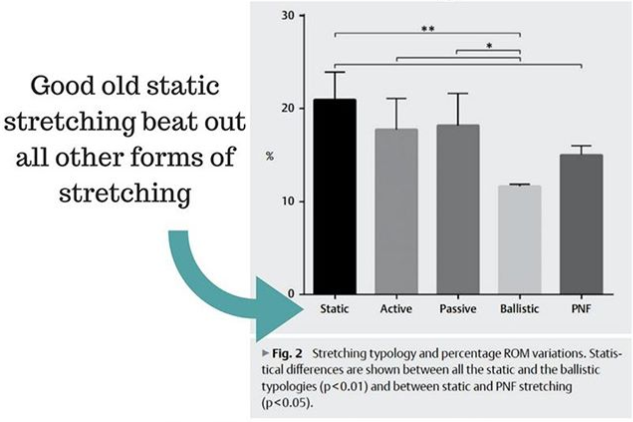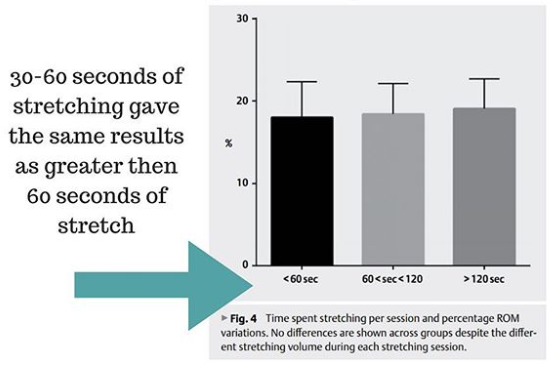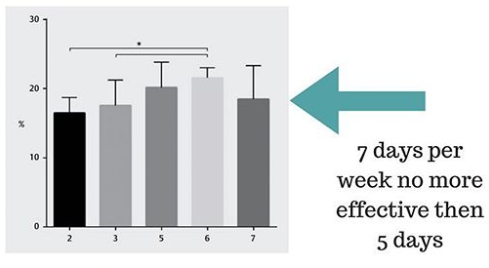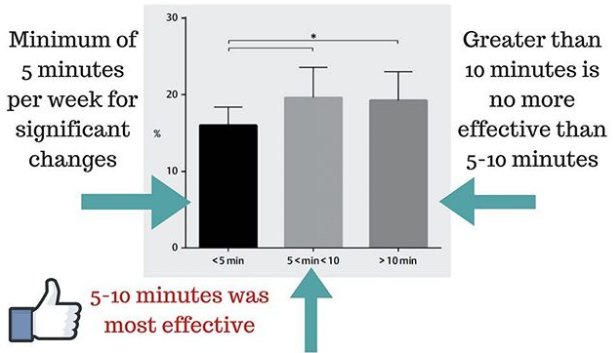How many times have you asked yourself this question?
How many times a week do you actually stretch? Is it worth it?
One of the foundations of improving spine alignment and health is improving flexibility and mobility.
Most of our neck pain, back pain and joint problems come down to a dysfunction in flexibility and mobility and stretching is certainly part of the path towards correction.
Stretching is a pretty complex topic and there's much misinformation out there. I will be the first to say that my personal recommendations change quite often; especially when new research comes out justifying it.
What's frustrating about stretching is that we are finding out that it doesn't really do what we think its supposed to do.
For example, it's become clear that static stretching isn’t the best tool for reducing the risk of injury prior to performance. Yet… right before most football games, basketball or baseball games… it's exactly what you see people doing?
We’ve also learned that stretching doesn't generally change the structure of our muscles and when it does change; it's likely due to adaptations in our nervous system.
Which is why Spine Care and Alignment are Sooooo important for fitness and overall health.
To make things more complicated… holding a stretch vs moving through a stretch results in different outcomes.
For example, holding a static stretch (especially >60 seconds) decreases strength and performance. This is why I always recommend dynamic warm-ups and foam rolling as part of flexibility training; not simply holding a stretch.
If you're wanting to improve performance, consider dynamic or ballistic stretching which has been shown to help improve vertical jump performance when performedr.
All that said, if you're not doing any kind of flexibility training, then either form of stretching is still effective for getting more flexible.
I also think its important to understand what your personal goals are. If you're an Olympic weight lifter or CrossFit (TM) athlete, then you need to be able to get into end ranges of motion such as deep squats and simultaneously have as much overhead mobility as possible.
This weekend I came across an article published in the International Journal of Sports Medicine (2018 Apr;39(4):243-254) that went through the current literature on stretching to help us come up with a few parameters on how to do it right.
It answered a bunch of great questions like, “What form of stretching is most effective for gaining range of motion?” and “How often should I stretch?” or “How long should I hold a stretch for?”
Here's what it said:
What form of stretching is most effective for gaining range of motion?
Regardless of how many times I've told athletes not to perform static stretching prior to their event, static stretching still outperforms all other forms of stretching including dynamic and PNF (contract/relax) stretching.
But before you throw out all other forms of stretching, realize that this is mostly for long term changes in range of motion.
If you were to review the literature on differences between range of motion when using static vs dynamic in the short term, you'd find similar results.
But If we’re looking for longer term changes in flexibility, static stretching seems to be the way to go!
How long should I hold a stretch for?
The next element observed was the effect of duration on changes in flexibility.
What they found was that 30-60 seconds gave the same results as stretching for 1-2 minutes (including durations longer then 2 minutes).
This was fun to read because for about 5 years now, I was under the impression that 60 seconds isn't enough for a good stretch. [Insert Palm in the Face Emoji!]
This means I can cut my stretching routines down by a considerable amount of time because we don’t need to be stretching for longer then 60 seconds in a single bout of stretching for a particular muscle group.
How Often Should I Stretch?
This is probably the most common question I get asked when it comes to stretching in general.
This study also took a look at how many times per week we need to stretch to improve our long term flexibility.
Researchers found that consistency was important.
Again… this is why I always say… regardless of the type of exercise, diet or any other health hack you're working on (including chiropractic treatment), at the end of the day, repetition and consistency is most important.
According to the study, adding more days of stretching to the week resulted in better improvements in flexibility.
What was interesting was that 6 days was the optimal dosage and greater then 6 days per week were not more effective.
How much total time per week should I spend stretching to maximize flexibility?
Finally, researchers also looked at the total time spent stretching per week.
They found that the sweet spot for changes in flexibility was a total of 5-10 minutes of stretching per week.
More than that wasn’t more effective and less then 5 minutes per week did not lead to significant changes.
And… Now You Know!
In Closing…
I have said it for a while now, but Flexibility and Mobility should be the foundation of our physical fitness.
If you're currently cycling, swimming, running, lifting weights, kickboxing, basket weaving, knitting, baking, gardening, Politic-ercising (e.g. jumping off and on the couch during political controversy), then you need to be stretching every day to maximize your potential.
I think we all know that stretching is something we need to be doing.
I hope this article helps you to train smarter and not harder by delivering the right dosage of stretching to get the improvements we want.







